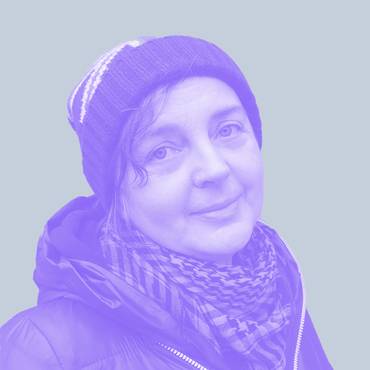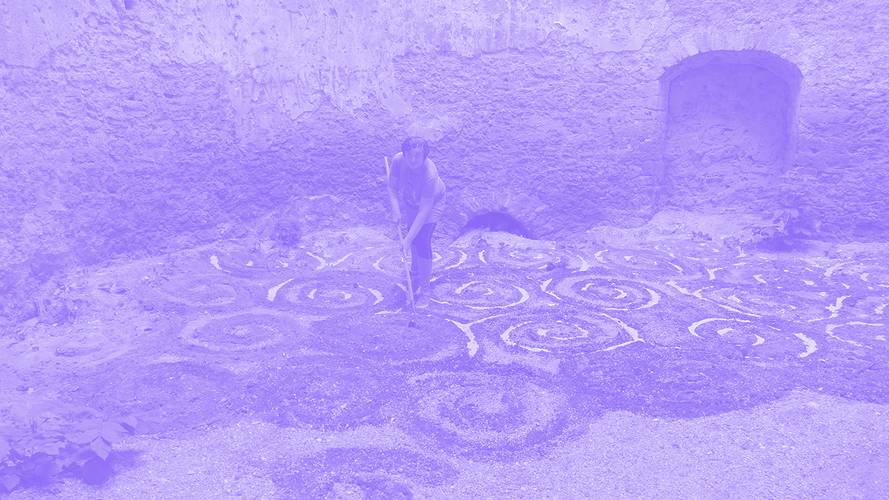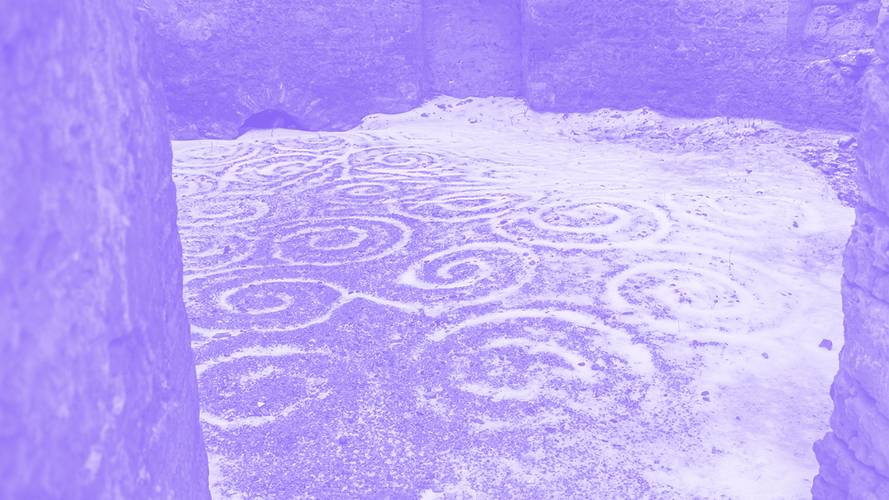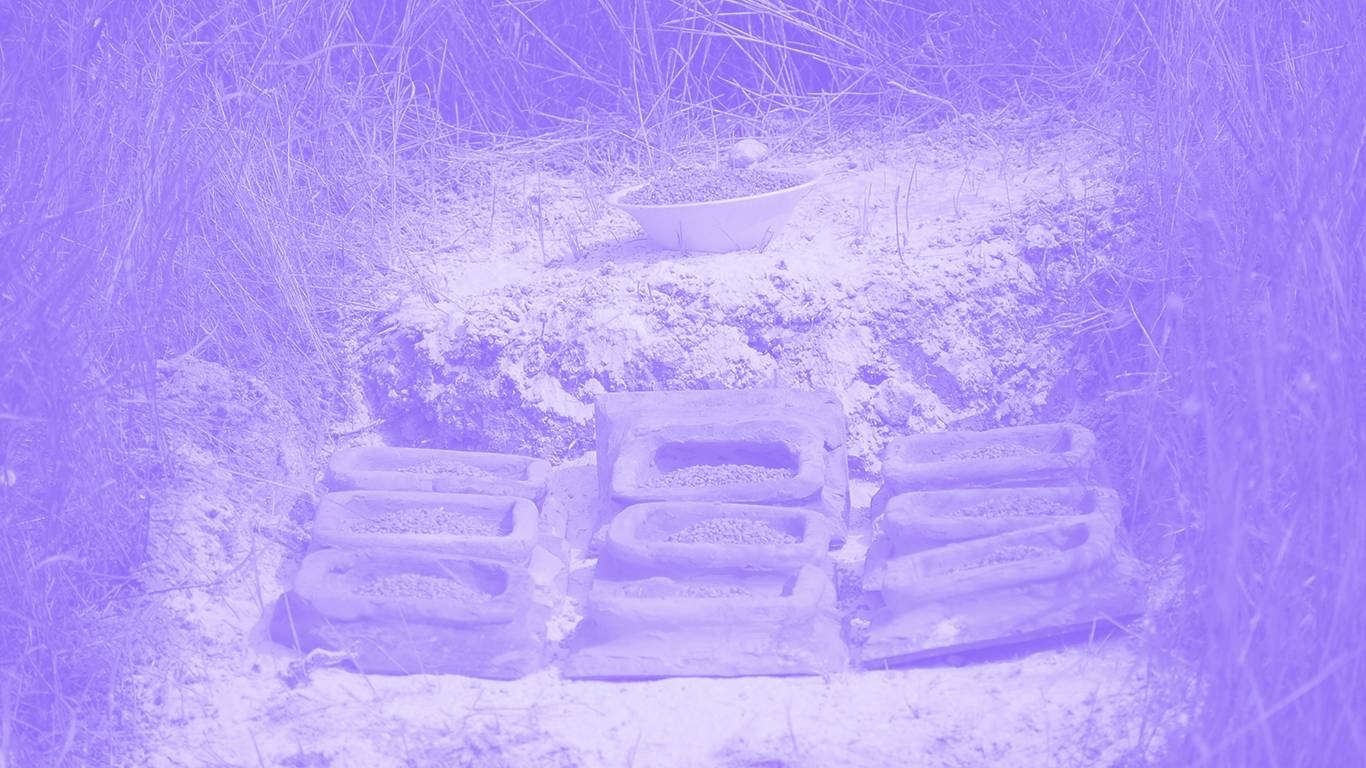
“To retreat from your principles means to lose”: Olena Afanasieva on how to continue creating projects, even if your city is under occupation
09/02/2023
Kherson was under occupation almost since the very beginning of the full-scale Russian invasion of Ukraine. From the first day, the city residents went to rallies, holding Ukrainian flags and chanting “Kherson is Ukraine!”
Olena Afanasieva, a curator, cultural manager, and the head of the Centre for Cultural Development “Totem”, believes that it is thanks to her, among others. For the past six years, she and her colleagues from “Cultural Centre Ukraine — Lithuania” have been engaged in restoring the historical memory of Kherson Oblast. Among such projects are the Terra Futura festival, art events on the territory of the Tiahyn fortress, and Lithuanian-Ukrainian art residencies.
Today, even despite the war, Olena continues taking care of the Kherson issues. In the interview, we have talked about the history of the city, Russian fakes about Kherson, and the importance of archaeological excavations to fight propaganda.
Until February 24: archeology vs propaganda

For the past six years, my colleagues and I have been working with a village in Kherson Oblast, where the archeological monument of national importance Tiahyn hillfort is located.
I have been fascinated by the multicultural heritage of Kherson Oblast for a long time. In 2016, our partners, the public organisation “Cultural Centre Ukraine — Lithuania” showed me the Watchtower, better known today as the Vytautas’ Tower, which is near the village of Vesele. It has an incredible view, and I thought it was the perfect place for a land art residency. However, soon Ukrhydroenergo’s plans to expand the Kakhovska Hydro Power Plant endangered both this territory and the existence of the very tower.
Therefore, Totem joined the advocacy campaign of “Cultural Centre Ukraine — Lithuania”. To draw attention to the threat of destruction of the tower, we organised the Terra Futura contemporary art festival on its territory. Next to the tower, artists were creating land art, and music was playing inside. Thanks to joint efforts, the Watchtower was entered into the register of historical monuments.


After this campaign, we joined forces with “Cultural Centre Ukraine — Lithuania” to take care of cultural and historical processes in Kherson Oblast. I started going to the excavations of the Southern Medieval Expedition led by Svitlana Biliaieva from the Institute of Archeology of the National Academy of Sciences. The village community was very progressive and supported the team in every possible way. Some people brought freshly caught crayfish and others hosted people in their houses.
As a result, archaeologists found many Ukrainian, Lithuanian, and Crimean Tatar artifacts. But none of them was Russian. Most of the finds related to the 14th and 15th centuries: the remains of a ceramic water tank, dishes, Polish coins, Lithuanian linings for ‘kalyta’ bags, and even a heraldic sign. During the time of Vytautas, the influence of Lithuania spread to the south of Ukraine: Odesa Oblast, Mykolaiv Oblast (the toponym of Vitovka for a micro-district is still preserved there), and Kherson Oblast. In Russian narratives, the Ukrainian steppe is wild, uninhabited, the territory where the Russian empress Catherine II ‘brought’ civilisation and culture. Like, there was nothing there at all. The archaeological research has proven that this is not true.
Next, we held a residency where nine artists worked with land art and historical context. It was during the COVID-19 pandemic. I saw an opportunity from the House of Europe to participate in a laboratory dedicated to art residencies. After the three-week course, we had to present our own projects. Three winners received funding of EUR 1,000. I applied with the idea of a residency in Tiahyn and won.
For EUR 1,000, I managed to invite two Lithuanian artists, five artists from Kherson, and two more from Vinnytsia and Sumy. The experiment was successful. We invited visitors to the last day of the excavation and to the presentation, and they were delighted. For, in addition to history and archeology, they had the opportunity to see history through the eyes of artists — to fantasise and reflect with them.

Last year on 24 August, on the 30th anniversary of Ukraine’s independence, our archaeologists led by Svitlana Biliaieva found a Cossack mace of the 15th-16th centuries. This is the oldest mace that was found in the south of Ukraine, and this symbol of Ukrainian power is in Kherson Oblast.
Traditionally, the people of Kherson celebrate the City Day on the third Sunday of September. In social networks, even this year, people congratulated Kherson on its 244th anniversary. I was indignant and began to ask from what date they calculate it. And, you know, in response I heard that it is the day of the decree of Catherine II. And this is not the birthday of the city, it is 244 years of occupation and forced Russification.
By the way, it is known that the empress intentionally destroyed the archives. Now, we are faced with the question: how to unearth this historical memory? There were Cossack settlements on the site of Kherson, but instead of financing the excavations, local officials, who have now become collaborators, collected money from local businessmen for a monument to Potemkin.
It is not known what happened to the tower and the area where the excavations were carried out. The tower was built as a defense structure, so I am afraid it is now used by the Russian military. I think that after deoccupation the tower will need restoration.
Until February 24, I had many plans to develop the cultural and historical park in Tiahyn. We wanted to create a park of gabions (sculptures made of metal meshes, filled with stones or other material — editor’s note), which would be made by artists from different countries, as well as to open the excavation site for visitors and cover it with a dome to protect it from bad weather. Now the priorities will be different. And we will start from demining.

After February 24: work despite the occupation
For me, the war began with a mystical story. On February 23, I was in the office of the “Cultural Centre Ukraine — Lithuania”. The day before, we received great news: we won a grant of almost EUR 500,000 for the creation of a cultural and historical park in Tiahyn. It was necessary to finalise bureaucratic issues, but I felt that I could not do anything. I felt nauseous, my head and whole body hurt a lot. I apologised to my colleagues and said that I would come next day. But this ‘next day’ never came. In the morning, I called the head of the center Nataliya Bimbiraite, and we understood that we had to leave.
Before the war, we did a lot in Kherson. And we knew that we were definitely included in the ‘lists’ (the lists of Ukrainian figures whom the Russian military planned to kill or arrest due to potential resistance — editor’s note) for our active anti-Russian activity. Articles were written about the excavations in Tiahyn and the debunking of the fake about Novorossiya, and the Russian media reacted aggressively to it. Like, the Ukrainians dug up two nails and now claim that something existed.
During the first three weeks of the full-scale war, we stayed in a village near Kherson, near Chornobaivka. We only had one TV channel and there was almost no communication. One night, a bomber flew over our house and dropped eight bombs in the fields. It was very scary. When we heard that the Russian checkpoints were approaching our village, we decided to go further.
When the Ukrainian military destroyed the Russian command post next to us, it was our chance to leave in the direction of Mykolaiv. From there we went to Odesa. I am currently in Ternopil.


The first month after leaving, I did not do anything, I tried to recover. And then I returned to work. Every Friday, we arranged a Zoom meeting with Kherson residents so as not to lose the community.
Later, we got in touch with the House of Europe and together we decided what to do next with the art project, for which we received a grant even before the war. They immediately offered us to distribute the funds at our discretion: evacuate the team, pay salaries, provide humanitarian aid, etc. But if we retreated from our principles, it would mean that Russians won and broke our cultural resistance. And this cannot be allowed. Therefore, we decided to continue the project.
On February 16, the National Academy of Sciences of Ukraine opened an exhibition dedicated to the project “Land Art and Archeology: Ukraine —Lithuania”. It lasted only 10 days. And in July, we showed it at the Vinnytsia Regional Local Lore Museum. The feedback was positive, it was especially nice to hear that people came to get to know Kherson and its history. We hope to open this exhibition in Kyiv again.
We plan to launch a website to showcase the works by land and environmental artists and further recreate the synergy of history, archeology, and art. Through this platform, we will tell exactly the story of the project: how it all began, under what conditions we worked and what is happening now, that is, we will show our project as a living organism. There will also be a story of how Russians shot an ambulance, killed and tortured local residents near Tiahynka.

Currently, boards like “Kherson is a city of Russian glory” are hung all over Kherson. But people understand that this is a lie. In particular, it is because we talked a lot about the true history of the city.
During the occupation, our artists, colleagues, and authors remained in Kherson. Of course, everyone had their own reasons for this. But one artist remained deliberately. He says that if no one remains, then who will keep Kherson Ukrainian?
Text: Oksana Semenik
Editing: Viktoriia Osipova
Translation: Julia Didokha
Stories
-
Katarina Mathernova: If Ukraine had a human face and a human spirit, it would be 10-year-old Roman Oleksiv
-
A regional mission to drive social entrepreneurship: the story of Ksenia Kosukha
-
EU restores safe water supply for 100,000 Ukrainians affected by war
-
Promoting IT during the war: Lviv IT cluster and how EU4Digital helps
-
Frontline digitalisation: Kharkiv IT Cluster collaborations
-
How EU4Youth is driving opportunity and success among young Ukrainians